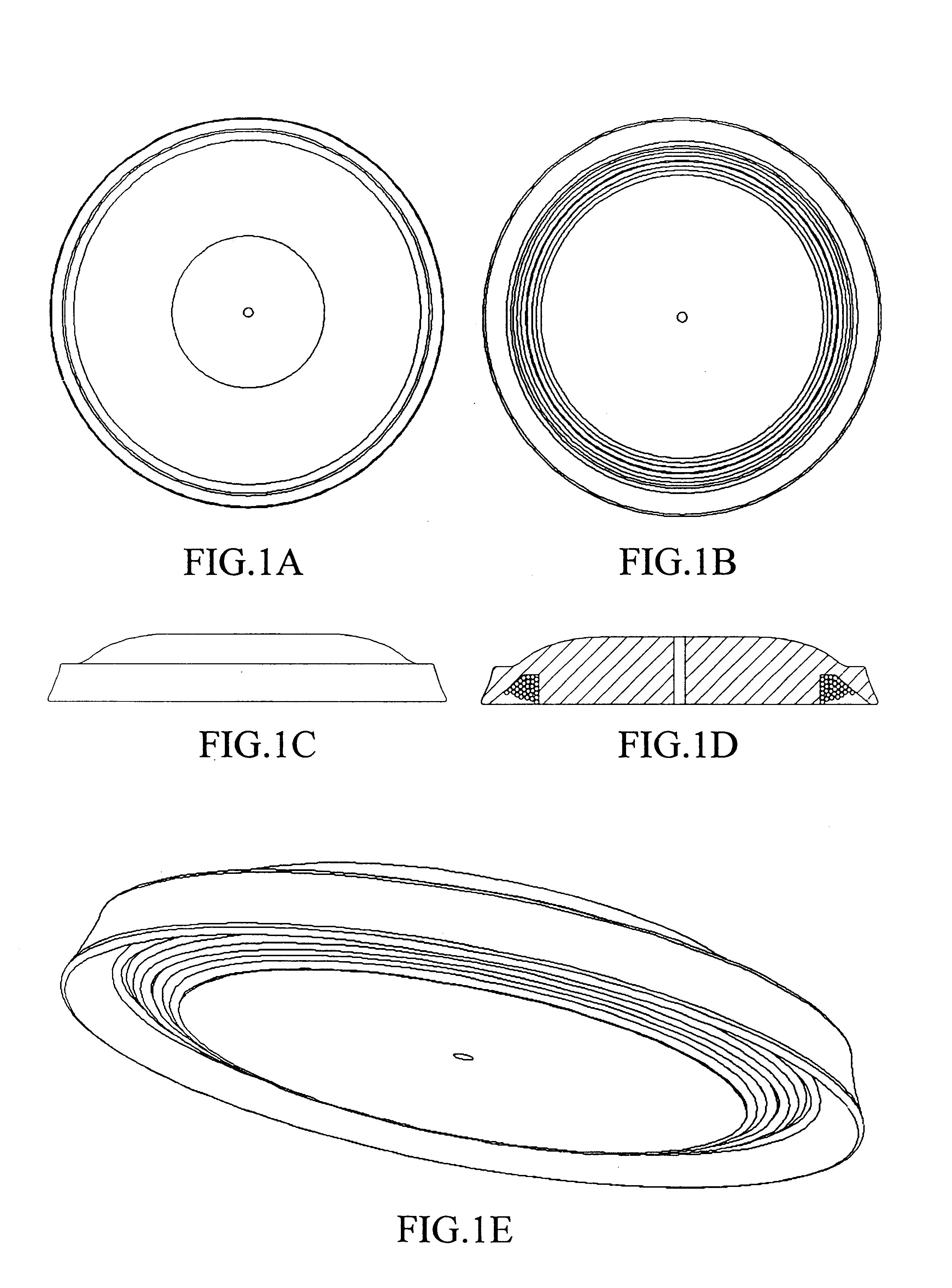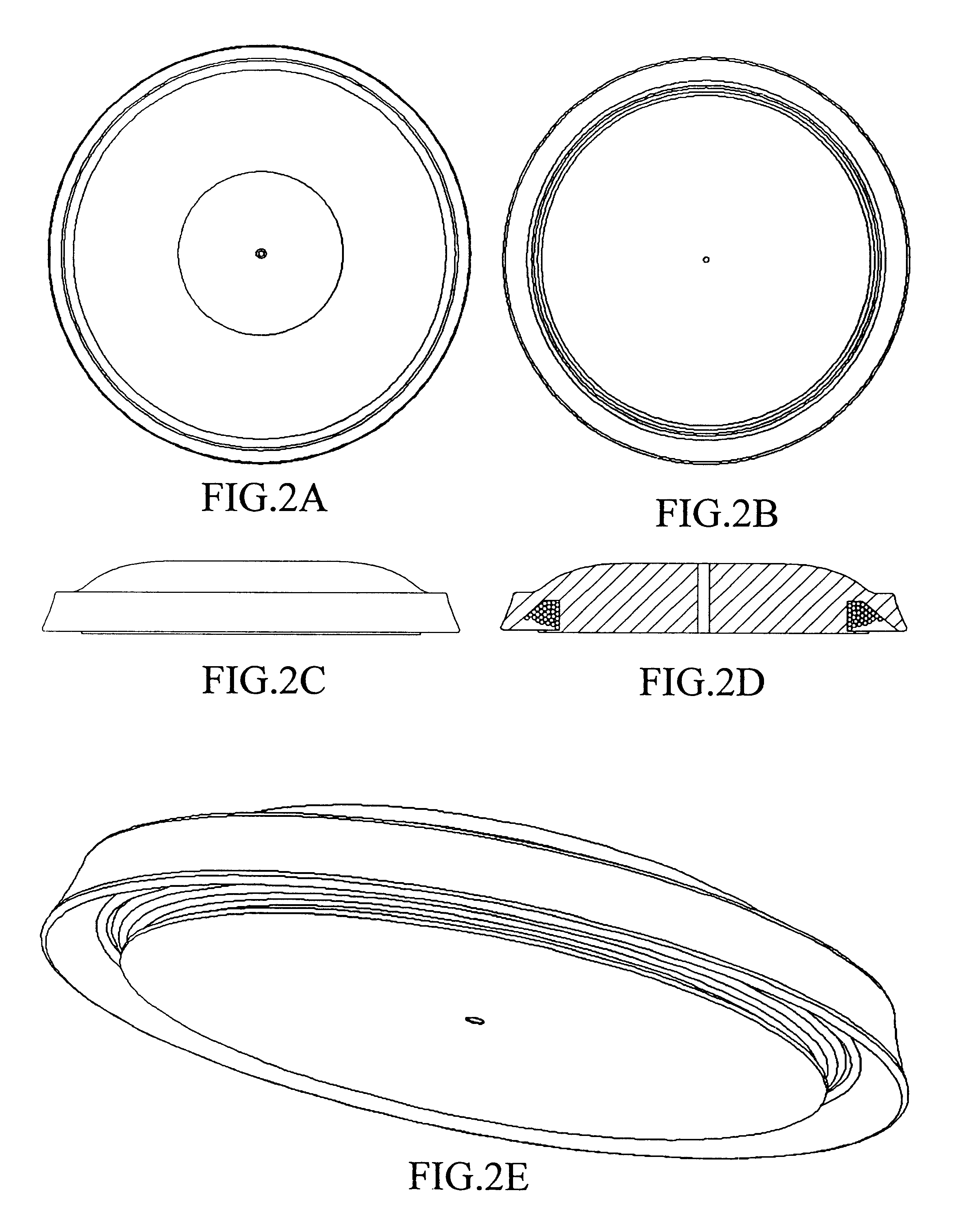Life-saving device
a life-saving device and technology of a life-saving device, applied in life-saving, waterborne vessels, cast lines, etc., can solve the problems of poor buoyancy, difficult redeployment, and no rescue device currently available to incorporate or be able to incorporate all of the above features
- Summary
- Abstract
- Description
- Claims
- Application Information
AI Technical Summary
Problems solved by technology
Method used
Image
Examples
embodiment 1
VI. Embodiment 1
In one embodiment of the invention a life-saving device is provided comprising a buoyant disk having a top side, a bottom side, a leading edge and a cavity on the bottom side along and adjacent to the leading edge. The cavity has an inner side generally parallel to the leading edge and distant from the center of the buoyant disk. A length of line is affixed to the buoyant disk and disposed around the inner side of the cavity. The line is preferably affixed to the buoyant disk through an orifice about the center of the disk which is oriented approximately parallel to the leading edge. The diameter of the orifice is preferably larger than the diameter of the line so that the line may move freely within the orifice. The line is generally inserted through this orifice from the top side of the buoyant disk and fitted with an adapter to secure the line to the buoyant disk.
Preferably the line is approximately 100 feet in length and secured at the bottom sides of the buoyant...
embodiment 2
V. Embodiment 2
In another embodiment of the invention a life-saving device is provided comprising a buoyant disk having a top side, a bottom side, a leading edge and a cavity on the bottom side along and adjacent to the leading edge. The cavity generally has an inner side distant from the center of the buoyant disk and an outer side more distant from the center of the buoyant disk than the inner side. The device further includes a base plate having an upper surface and a lower surface and a diameter generally less than that of the buoyant disk and overlapping the cavity. The base plate preferably overlaps the cavity approximately 50% to allow retention of the line when the device is stored and for rapid deployment of the line during use. The upper surface of the base plate preferably has a hollow tube portion projecting perpendicular from its center. The hollow tube portion has a diameter able to accept a line and of a length generally equal to the thickness of the buoyant disk. The...
embodiment 3
VI. Embodiment 3
In yet another embodiment of the present invention a life-saving device is provided comprising a buoyant disk having a top side, a bottom side, a leading edge and a cavity disposed on the bottom side along and generally adjacent to the leading edge of the buoyant disk. The cavity has an inner side distant from the center of the buoyant disk and an outer side more distant from the center of the buoyant disk than the inner side. The cavity is able to accept a length of line disposed around the inner side. This device further comprises a base plate having an upper surface and a lower surface. The lower surface of the base plate is preferably domed. The diameter of the base plate is generally less than that of the buoyant disk and overlaps the cavity approximately 50% to allow retention of the line when the device is stored and for rapid deployment of the line during use. The upper surface of the base plate is affixed to the bottom side of the buoyant disk.
A hollow tube ...
PUM
 Login to View More
Login to View More Abstract
Description
Claims
Application Information
 Login to View More
Login to View More - R&D
- Intellectual Property
- Life Sciences
- Materials
- Tech Scout
- Unparalleled Data Quality
- Higher Quality Content
- 60% Fewer Hallucinations
Browse by: Latest US Patents, China's latest patents, Technical Efficacy Thesaurus, Application Domain, Technology Topic, Popular Technical Reports.
© 2025 PatSnap. All rights reserved.Legal|Privacy policy|Modern Slavery Act Transparency Statement|Sitemap|About US| Contact US: help@patsnap.com



